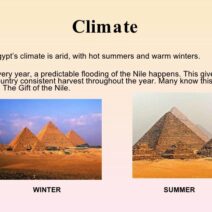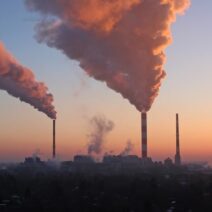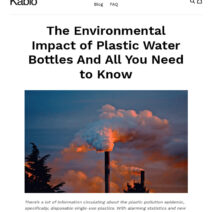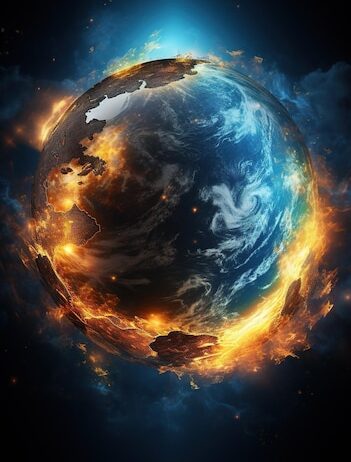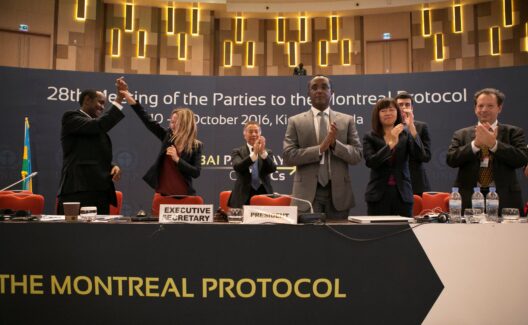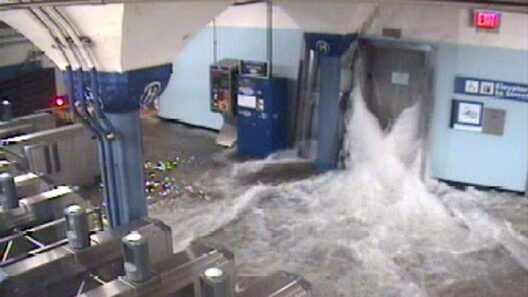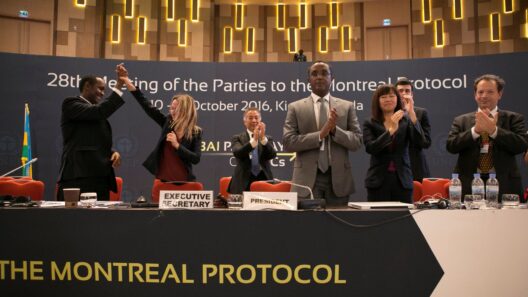The Earth’s Ring of Fire is a geological phenomenon characterized by a horseshoe-shaped zone of tectonic activity, housing approximately 75% of the world’s active volcanoes and experiencing frequent seismic events. Spanning across the Pacific Ocean, this region is located along the edges of the tectonic plates and influences a significant portion of global geological instability. The question arises: could the Ring of Fire be a determinant factor in the current escalation of global temperatures? Examining this notion requires a multifaceted analysis of geology, climate science, and the interrelated impacts of geological activities on Earth’s atmospheric conditions.
To explore whether the Ring of Fire is contributing to an increase in Earth’s temperatures, we must first consider the mechanisms by which volcanic activity can influence climate. Volcanic eruptions release vast amounts of gases and particles into the atmosphere, including carbon dioxide (CO2), sulfur dioxide (SO2), and ash. While CO2 is a greenhouse gas that can lead to global warming when present in elevated concentrations, the eruption of volcanoes often initially has a cooling effect due to the release of SO2. This gas converts into sulfate aerosols, which scatter sunlight and contribute to a temporary cooling of the Earth’s surface.
Historically, significant eruptions from volcanoes within the Ring of Fire, such as Mount St. Helens and Mount Pinatubo, have showcased this phenomenon. The eruption of Mount Pinatubo in 1991 resulted in a notable decrease in global temperatures by about 0.5°C for roughly two years, showcasing that intense volcanic activity can have short-term cooling effects. However, this aspect of volcanic influence on climate is largely transient; any cooling effect is typically outweighed by long-term trends in global warming driven by anthropogenic emissions.
Climate scientists have observed that while the immediate impacts of volcanic eruptions can impart short-lived climatic changes, the underlying issues of global warming are predominantly driven by human-induced activities. The combustion of fossil fuels, deforestation, and industrial processes have led to a significant increase in atmospheric CO2 levels, which is the primary driver of the current climate crisis. The sheer scale and permanence of these human activities overshadow the intermittent geological influences from the Ring of Fire.
Moreover, the connection between the Ring of Fire’s geological activities and seismic events must not be overlooked. Earthquakes resulting from tectonic forces can indirectly contribute to climate change by triggering landslides, altering landscapes, and potentially releasing stored carbon from geological formations. The interaction of tectonic movements with global carbon reservoirs may create a feedback loop; however, these geological processes operate over significantly longer timescales compared to the rapid environmental changes observed today.
In recognizing the broader implications of geological activity on climate, one must address the concept of geothermal energy. The Ring of Fire is a prime region for geothermal energy, a renewable resource harnessed through the natural heat emanating from the Earth’s crust. Utilizing geothermal energy could play a vital role in combating climate change by providing a sustainable energy source that reduces dependence on fossil fuels. In fact, regions along the Pacific Rim, including countries such as Iceland, Japan, and the United States, have pioneered geothermal energy initiatives that demonstrate its potential in diminishing global carbon emissions.
Yet the exploration of geothermal systems also raises points of contention. The extraction process can lead to induced seismicity in some instances. This phenomenon occurs when the natural pressure balance of geological formations is disrupted, possibly triggering minor earthquakes. While these seismic events are typically small and manageable, they highlight the delicate equilibrium between harnessing Earth’s heat and preserving geological stability.
Environmentalists advocate for a comprehensive approach to understanding and mitigating climate change. This involves recognizing the natural phenomena of the Ring of Fire while firmly placing the responsibility for climate alteration on human-induced factors. While the cyclical nature of Earth’s geological processes contributes to a long-form climate narrative, they are not the primary actors in the planet’s current predicament.
Education and awareness are crucial components in addressing misconceptions regarding the Ring of Fire and global warming. Misunderstandings may lead to negligence of the urgent need for action against human-driven climate change. Outreach and informative platforms should clarify that while the Ring of Fire inherently holds significant geological activity, it is not a primary catalyst of the current climate crisis; instead, it is an area that can be harnessed for sustainable energy solutions.
As inhabitants of this fragile planet, it is imperative to understand the profound interconnections inherent within Earth’s systems. The Volcanoes of the Ring of Fire, while fascinating from a geological perspective, do not substantiate a justification for complacency regarding climate inaction. The onus lies on human innovation, responsibility, and cooperation at a global scale to address and mitigate the effects of climate change. Only through collective efforts and sustainable practices can we hope to forge a path toward a stable and resilient future in the face of our rapidly changing climate.
In conclusion, analyzing the impacts of the Ring of Fire is critical to enhancing our understanding of geological and climatic interrelationships. However, the dominant forces at play in the escalation of global warming stem from anthropogenic activities rather than from natural geological phenomena. Only by embracing sustainable energy practices and reinforcing collective environmental action can we embark on a more conscientious trajectory toward healing our planet.
